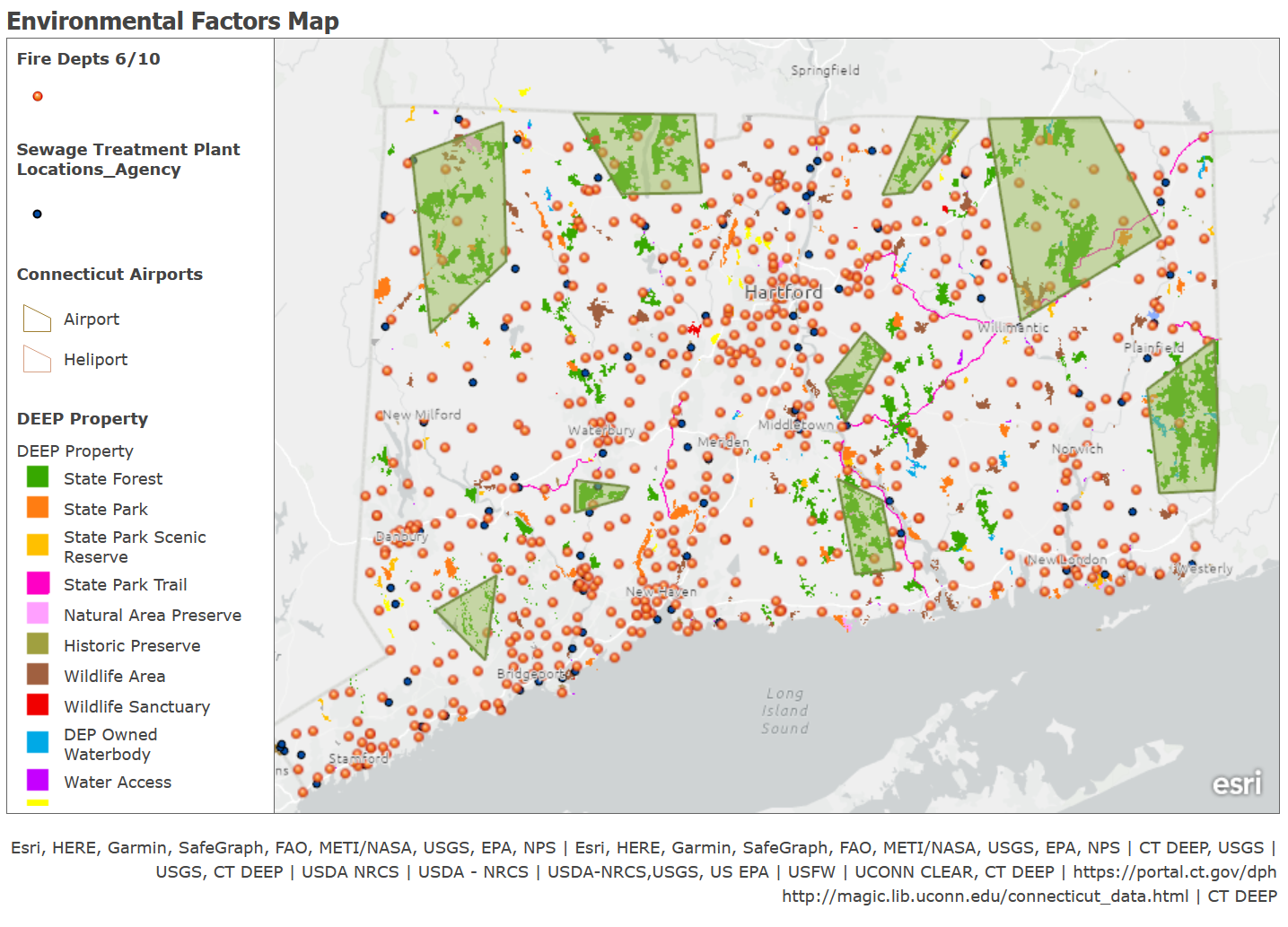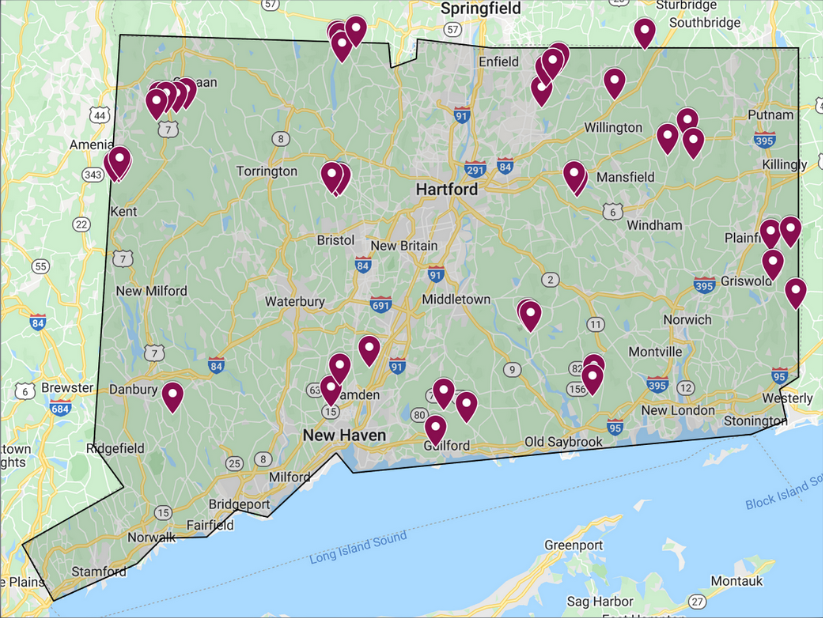
Figure 1

Figure 2

Team 3
Team Members |
Faculty Advisor |
Grace Pagano |
Alexander Agrios Sponsor Other |
sponsored by

Determining Background Concentrations of PFAS in Connecticut Soils
Per- and polyfluoroalkyl substances (PFAS) have become a global issue and require immediate action from all government agencies in order to ensure the protection of public health and the environment. Their manufacture since the mid-twentieth century has resulted in their widespread distribution throughout the world, posing a difficult challenge to environmental professionals. Each state in the United States is moving forward with their own regulations and task forces to address PFAS and its associated compounds in an effort to contain this persistent contaminant. The state of Connecticut has decided to take action through the establishment of an Interagency PFAS Task Force and PFAS Action Plan. Our team has been tasked with aiding in the collection of PFAS background concentrations in order to establish a baseline concentration of this contaminant in Connecticut soils; PFAS has become so widespread, it is present in soils everywhere to some degree. These background concentrations will lead to the establishment of enforceable regulations that manufacturer's must adhere to in an effort to reduce the impact PFAS has and will have on human health and the ecosystem. The team designated overarching milestones for this project that were accomplished throughout the semester. The first milestone consisted of an analysis of the Connecticut Department of Energy and Environmental Protection's (CT DEEP) online ArcGIS database for layers containing features related to potential PFAS sources. Ideal background sampling locations were situated away from these potential sources to get the most accurate measurement. The second milestone involved the identification of exact soil sample locations within CT DEEP property using the information gained from the first milestone. The third milestone involved the execution of the soil sampling plan and collection of results to be combined into a final report analyzing trends in PFAS concentrations across the state.
